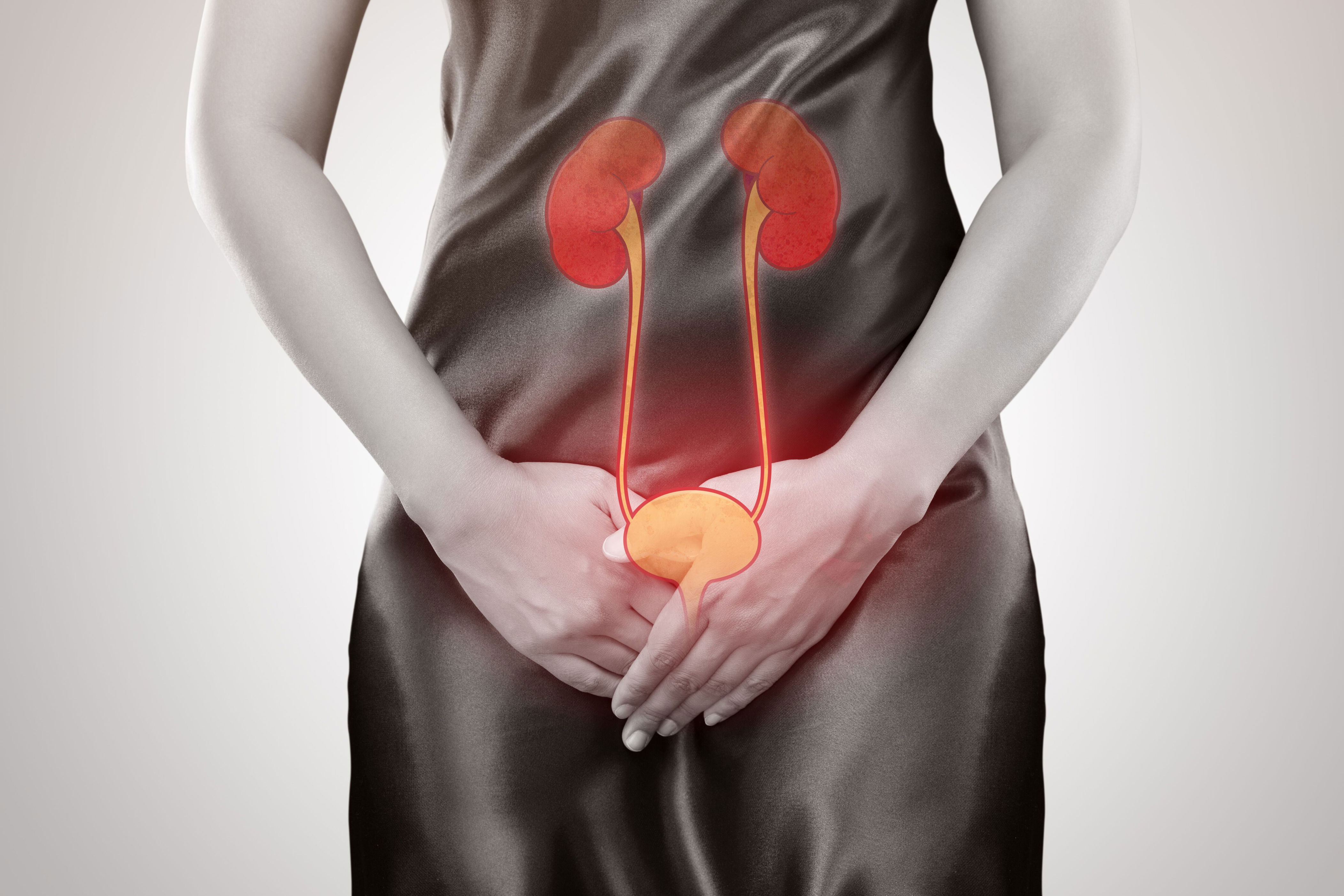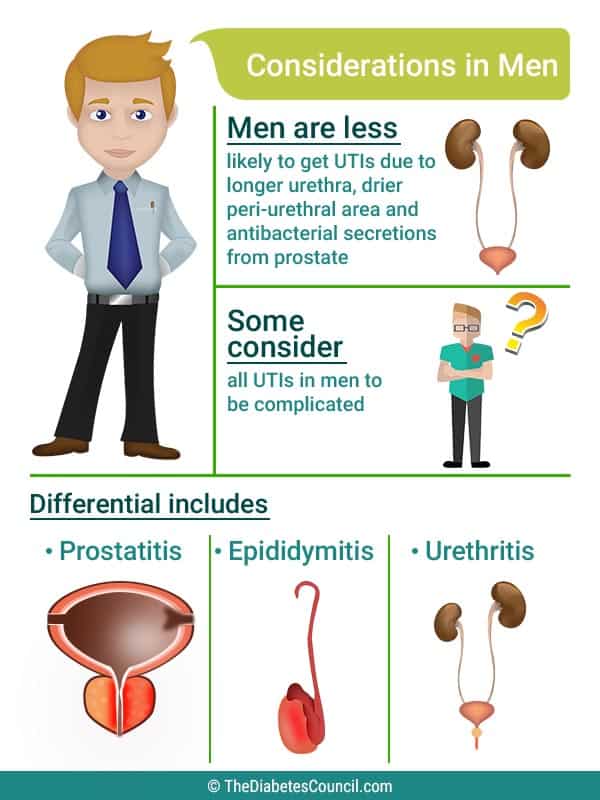Do guys get utis. Urinary Tract Infections (UTIs) in Men: Causes, Symptoms, and Treatment
What causes urinary tract infections (UTIs) in men? What are the symptoms of UTIs in men? How are UTIs in men diagnosed and treated?
The Two Types of Urinary Tract Infections in Men
Urinary tract infections (UTIs) in men can be classified into two main types: upper tract infections and lower tract infections. Upper tract infections occur in the ureters or kidneys, while lower tract infections happen in the bladder, prostate, or urethra.
Symptoms of UTIs in Men
Depending on the location of the UTI, men may experience a variety of symptoms, including frequent bathroom trips, feeling the need to urinate constantly, pain or burning during urination, pain or tenderness below the stomach, bed-wetting, cloudy or foul-smelling urine, blood in the urine, fever, nausea, and pain in the sides or upper back.
Diagnosing a UTI in Men
To diagnose a UTI, a doctor will ask about the patient’s symptoms and sexual history, as sexual activity can increase the risk of a UTI. A urine test can confirm the presence of a UTI. If the doctor suspects a prostate issue, they may also perform a prostate exam. In some cases, imaging tests like X-rays or ultrasounds may be ordered to get a better look at the urinary tract.

Treating a UTI in Men
Doctors typically treat UTIs in men with oral antibiotics. The specific antibiotic prescribed will depend on the likely source of the infection and the type of bacteria causing it. Patients may start taking antibiotics before the results of the urine test are available, and the prescription may be adjusted if the test reveals a different type of bacteria. Lower tract infections usually require a week or less of antibiotic treatment, while upper tract infections may need up to two weeks.
Causes and Risk Factors for UTIs in Men
The most common cause of a UTI in the urethra is a sexually transmitted infection like chlamydia or gonorrhea. Prostate problems, such as an enlarged prostate (BPH), can also increase the risk of UTIs in men, as can diabetes and other conditions that affect the immune system.
Complications of Untreated UTIs in Men
If left untreated, a lower tract UTI can spread to the kidneys, which can lead to serious complications like chronic kidney disease, kidney failure, or sepsis (a potentially life-threatening blood infection). Prompt treatment is crucial to prevent these complications.

Preventing UTIs in Men
While it’s not possible to prevent all UTIs, there are steps men can take to reduce their risk. Wearing condoms during sex can help protect against sexually transmitted infections that can cause UTIs. Treating any underlying prostate issues can also lower the chances of developing a UTI.
Can UTIs in men be prevented?
While it’s not possible to prevent all UTIs in men, there are some steps that can help reduce the risk. Wearing condoms during sex can protect against sexually transmitted infections that can lead to UTIs. Treating any underlying prostate problems, such as an enlarged prostate, can also lower the chances of developing a UTI.
What are the potential complications of an untreated UTI in men?
If a UTI in a man is left untreated, it can spread to the kidneys, which can lead to serious complications. These include chronic kidney disease, kidney failure, and sepsis (a potentially life-threatening blood infection). Seeking prompt treatment for a UTI is crucial to prevent these serious complications.

How are UTIs in men diagnosed?
To diagnose a UTI in a man, the doctor will first ask about the patient’s symptoms and sexual history, as sexual activity can increase the risk of UTIs. A urine test can confirm the presence of a UTI. If the doctor suspects a prostate issue, they may also perform a prostate exam. In some cases, imaging tests like X-rays or ultrasounds may be ordered to get a better view of the urinary tract.
What are the most common causes of UTIs in men?
The most common cause of a UTI in the urethra of a man is a sexually transmitted infection, such as chlamydia or gonorrhea. Prostate problems, like an enlarged prostate (BPH), can also increase the risk of UTIs in men. Diabetes and other conditions that affect the immune system can also make men more susceptible to UTIs.
How are UTIs in men typically treated?
Doctors usually treat UTIs in men with oral antibiotics. The specific antibiotic prescribed will depend on the likely source of the infection and the type of bacteria causing it. Patients may start taking antibiotics before the results of the urine test are available, and the prescription may be adjusted if the test reveals a different type of bacteria. Lower tract infections usually require a week or less of antibiotic treatment, while upper tract infections may need up to two weeks.

What are the symptoms of a UTI in men?
Depending on the location of the UTI, men may experience a variety of symptoms, including frequent bathroom trips, feeling the need to urinate constantly, pain or burning during urination, pain or tenderness below the stomach, bed-wetting, cloudy or foul-smelling urine, blood in the urine, fever, nausea, and pain in the sides or upper back.
Urinary Tract Infections (UTIs) in Men: Causes, Symptoms, Treatment
Written by Markham Heid
- The Two Types of Urinary Tract Infection
- UTI Symptoms
- Diagnosing a UTI
- Treatment for a UTI
- UTI Causes and Risk Factors
- UTI Complications
- Preventing a UTI
- More
Your urinary tract includes the parts of your body that make urine and carry it out of your body.
For men, these parts include your kidneys and bladder, as well as your ureters and urethra. Ureters are the twin tubes that carry urine from your kidneys to your bladder. Your urethra is the single tube that carries urine from your bladder past your prostate and to the tip of your penis.
If unhealthy bacteria build up anywhere in your urinary tract, this can cause an infection. And while urinary tract infections (UTIs) are much more common in women, men can also get them.
Doctors usually refer to UTIs as either “upper tract” or “lower tract. ” An upper-tract infection is one that happens in the ureters or kidneys. A lower-tract infection is one that happens in the bladder, prostate, or urethra.
” An upper-tract infection is one that happens in the ureters or kidneys. A lower-tract infection is one that happens in the bladder, prostate, or urethra.
Depending on the location of your UTI, you may have one or more of these symptoms:
- Frequent bathroom trips
- Feeling like you have to pee all the time
- Pain, burning, or discomfort while peeing or just after
- Pain or tenderness below your stomach
- Wetting the bed
- Cloudy or smelly urine
- Blood in your urine
- Fever
- Nausea
- Pain in the sides or upper back
Some men don’t have any symptoms at all.
Your doctor will ask about your symptoms. They will also ask about your sexual history because sex can raise your risk for a UTI.
Urine tests can confirm whether you have a UTI. If your doctor thinks the problem might be related to your prostate, you may get a prostate exam. Rarely, you may also need to get an X-ray or ultrasound so your doctor can get a better look at your urinary tract.
Doctors usually treat UTIs with antibiotics you take by mouth. Your doctor will probably choose an antibiotic based on the likely source (such as your bladder) and the bacteria that most commonly cause your UTI. You’ll probably start taking those antibiotics before you get the results of your urine test. (Your doctor may change the prescription if the test shows that the bacteria causing your UTI aren’t targeted by your first antibiotic.)
If you have a lower urinary tract infection, you’ll probably only need antibiotics for a week or less. If you have an upper-tract infection, you may need to take antibiotics for up to 2 weeks.
In rare and severe cases, you may need to take antibiotics by IV in a hospital.
The most common cause of a UTI in the urethra is a sexually transmitted disease. Chlamydia and gonorrhea are two STDs that can cause a UTI. STDs are also the most common cause of UTIs in younger men.
Prostate problems can also cause UTIs. An enlarged prostate (BPH) is common in older men and can block the flow of urine. This can increase the odds that bacteria will build up and cause a UTI.
This can increase the odds that bacteria will build up and cause a UTI.
Prostatitis, which is an infection of the prostate, shares many of the same symptoms as UTIs.
Diabetes and other medical issues that affect your immune system can also make you more likely to get a UTI.
If untreated, a lower urinary tract infection can spread up to your kidneys. Doctors can usually treat kidney infections. In rare cases, an untreated kidney infection can lead to chronic kidney disease or kidney failure. A kidney infection can be serious, because it could cause sepsis (an infection in the bloodstream). If that happens and you feel very sick, you may need to be treated in a hospital.
You can’t prevent all UTIs, but you can help make them less likely. Wearing a condom during sex can protect you from STDs, which can lower your risk for a UTI. Treating prostate problems can also lower your risks.
Top Picks
Urinary Tract Infections in Men: Symptoms, Diagnosis, and Treatment
Though women are usually the ones plagued with irritating urinary tract infection (UTI) symptoms, men can develop UTIs, too. And the older a man is, the greater his risk for getting one.
And the older a man is, the greater his risk for getting one.
By Lindsey KonkelMedically Reviewed by Igor Kagan, MD
Reviewed:
Medically Reviewed
Twelve percent of men will experience symptoms of at least one UTI during their lives.iStock; Everyday Health
While urinary tract infections are common in women, with at least 40 to 60 percent of women developing a UTI during their lives, according to the National Institute of Diabetes and Digestive and Kidney Diseases (1), men are not immune to these often troublesome and potentially dangerous infections.
According to the American Urological Association, 12 percent of men will have symptoms of at least one UTI during their lives. (2) And while urinary tract infections are rare in young men, the risk of infection increases as they age: UTIs become more common in men older than 50. (3)
Women are at greater risk for urinary tract infections simply due to their anatomy: The bacteria that normally live in the pelvic region — and the major cause of this type of infection — don’t have to travel far to infect the bladder. (1)
(1)
Conversely, the male anatomy can help keep this type of infection at bay. “The longer urethra in men makes it more difficult for bacteria to travel backward that far without being washed out or killed by the immune system,” explains Landon Trost, MD, a urologist at the Male Fertility and Peyronie’s Clinic in Orem, Utah.
Factors That Put Men at Risk for UTIs
Besides age, there are additional factors that put you at a greater risk for getting a UTI if you’re a man, including: (1,4)
- An enlarged prostate gland
- Kidney stones
- Diabetes
- Bladder catheter insertion
- Any health condition that affects the immune system
- Unprotected anal intercourse
Recognizing UTI Symptoms in Men
A urinary tract infection usually entails inflammation of the bladder (cystitis) and can also involve an infection of the lower or upper urinary tract, and — in more serious cases — the kidneys. Common UTI symptoms include: (1)
- Frequent urination
- A strong, constant urge to urinate
- Releasing only small amounts of urine at a time
- Cloudy, bloody, or bad-smelling urine
- Suprapubic (lower abdominal) pain
- Burning or pain during urination
Any of these symptoms accompanied by lower back pain, fever, nausea, or chills could indicate a kidney infection — a serious problem that needs prompt treatment.
However, not every man, woman, or child who gets a UTI has typical UTI symptoms, but most do exhibit at least one or more signs of infection. And when men do get UTIs, their symptoms are generally not too different from those that women experience. While a UTI diagnosis technically requires you to be symptomatic, you can have asymptomatic bacteriuria — essentially, a UTI without symptoms — for which treatment is rarely indicated, according to research.
RELATED: The Link Between UTIs and Sex: Causes and How to Prevent Them
How UTIs in Men Are Diagnosed
A urinary tract infection occurs when bacteria (or, less commonly, a virus or even a fungus) enters the urinary tract. In fact, according to the National Kidney Foundation, one particular bacteria, E. coli, causes 80 to 90 percent of all UTI cases. (5)
Diagnosing a urinary tract infection in men is initially the same as it is for women, consisting of a urine culture. But because a UTI in a man is often considered complicated, according to Dr. Trost, additional testing is usually necessary to determine why he got a UTI.
Trost, additional testing is usually necessary to determine why he got a UTI.
“This typically includes not only a urinary culture to confirm an infection, but also a special study to evaluate how much urine he leaves behind after urinating, and an imaging study, such as a CT [computerized tomography] scan, to evaluate for kidney stones or other anatomic abnormalities that may be causing this,” he explains.
If a man has recurrent infections or infections with the same organism, or UTI-like symptoms without a positive urine culture, then further testing may be necessary.
Any man who suspects he may have a UTI should see his doctor right away so that he can begin treatment as soon as possible.
RELATED: Vegetarian Diet Linked to Lowered Risk Of Urinary Tract Infection
How Urinary Tract Infections Are Treated in Men
Whether an infection affects a man or a woman, the treatment is the same: a round of antibiotics to kill the bacteria and get rid of UTI symptoms. (1) For an uncomplicated infection, a woman typically needs to take an antibiotic for one to three days. For men, a longer course of at least seven days of antibiotics is required, says Trost.
(1) For an uncomplicated infection, a woman typically needs to take an antibiotic for one to three days. For men, a longer course of at least seven days of antibiotics is required, says Trost.
How to Prevent Urinary Tract Infections in Men
Younger men can’t do too much in terms of preventing a UTI, according to Trost. But older men can take a few steps to lower their risk. “One of the best defense mechanisms against UTIs is to completely empty the bladder every time you urinate,” says urologist Howard B. Goldman MD, a urologist at the Cleveland Clinic in Ohio.
It’s also important to drink lots of fluids, especially water, every day. If you already have a UTI, drinking plenty of fluids can help push the bacteria out of the urinary tract — and in some very mild UTI cases, that could be enough to treat it. (1) But if you notice any of the signs of a UTI, it’s still very important to head to your doctor for a diagnosis and treatment recommendation.
Without proper UTI treatment, the infection can quickly spread and become a serious — and sometimes even fatal — threat. So don’t brush off symptoms like frequent urination or a burning sensation when you urinate, and don’t assume that you can’t get a UTI just because you’re a man. It’s important that you get these symptoms checked out promptly, too.
So don’t brush off symptoms like frequent urination or a burning sensation when you urinate, and don’t assume that you can’t get a UTI just because you’re a man. It’s important that you get these symptoms checked out promptly, too.
Symptoms of UTI vs. STD in Males
Having sex — vaginal, oral, or anal — increases your risk of a sexually transmitted disease or infection. (6) While many sexually transmitted infections have no signs or symptoms, others can mimic the signs and symptoms of a UTI.
Chlamydia and gonorrhea, for instance, are caused by bacteria that can infect the genital tract. Like UTIs, these STDs can cause pain or a burning sensation during urination. (6)
Though there’s little data in men, STDs are commonly misdiagnosed as UTIs in women, according to a study published in 2015. (7) Talk to your doctor if you think there’s a possibility you could have an STD. Bacterial STDs, such as chlamydia and gonorrhea, can be treated with antibiotics.
Additional reporting by Barbara Kean, Diana Rodriguez.
Editorial Sources and Fact-Checking
- Definition and Facts of Bladder Infection in Adults. National Institute of Diabetes and Digestive and Kidney Diseases. March 2017.
- What Is a Urinary Tract Infection (UTI) in Adults? American Urological Association. November 2022.
- Urinary Tract Infection in Men. Harvard Health Publishing. December 5, 2022.
- Jamil RT, Foris LA, Snowden J. Proteus Mirabilis Infections. StatPearls. October 25, 2022.
- Urinary Tract Infections [PDF]. National Kidney Foundation. 2010.
- Sexually Transmitted Disease (STD) Symptoms. Mayo Clinic. May 5, 2022.
- Tomas ME, Getman D, Donskey CJ, Hecker MT. Overdiagnosis of Urinary Tract Infection and Underdiagnosis of Sexually Transmitted Infection in Adult Women Presenting to an Emergency Department. Journal of Clinical Microbiology. July 20, 2015.
Additional Sources
- FAQs About “Catheter-Associated Urinary Tract Infection.
 ” [PDF] Centers for Disease Control and Prevention.
” [PDF] Centers for Disease Control and Prevention. - Crader MF, Kharsa A, Leslie SW. Bacteriuria. StatPearls. November 28, 2022.
Show Less
By subscribing you agree to the Terms of Use and Privacy Policy.
7 Home Remedies for Urinary Tract Infection (UTI) Symptoms
Home remedies for urinary tract infection, or UTI, like drinking more water, may help bring relief to symptoms. Learn about more UTI remedies and how …
By Lindsey Konkel
Urinary Tract Infections Linked to Bacteria in Meat
E. coli is the leading cause of UTI infections, but a new study reveals that over half a millions cases each year could come from E. coli originating …
By Lisa Rapaport
What Is a Urinary Tract Infection (UTI)? Symptoms, Causes, Diagnosis, Treatment, and Prevention
A UTI is a common condition that occurs when bacteria migrates into the urinary tract and multiplies. Symptoms include a frequent urge to urinate, even…
Symptoms include a frequent urge to urinate, even…
By Holly Pevzner
Diagnosing UTI: Tests and Screenings, Early Diagnosis, and Your Doctors
Urinary tract infections (UTIs) can be diagnosed several different ways. Learn about OTC tests, signs of the infection, doctor tests, diagnosis, and recurrent…
By Holly Pevzner
Signs and Symptoms of Urinary Tract Infections
Symptoms of a UTI include pain or burning when urinating, needing to urinate urgently or frequently, and pelvic pain. Learn about early signs, diagnostic…
By Holly Pevzner
How to Prevent Urinary Tract Infections, or UTIs
Help prevent urinary tract infections, or UTIs, with expert tips. Habits such as urinating frequently, as well as after having sex, drinking lots of water…
By Holly Pevzner
Runny nose with copious discharge from the nose due to external irritants
20% of the world’s people have a runny nose from time to time. This is a disease that overcomes a person under the influence of external factors on the mucous membrane. The main irritants are dust, allergens (plant pollen, pieces of pet hair), including air temperature. Initially, the disease seems harmless, but a doctor’s consultation is necessary. The doctor identifies the type of irritant that causes mucous discharge from the nose. Based on his findings, the specialist prescribes the correct treatment.
This is a disease that overcomes a person under the influence of external factors on the mucous membrane. The main irritants are dust, allergens (plant pollen, pieces of pet hair), including air temperature. Initially, the disease seems harmless, but a doctor’s consultation is necessary. The doctor identifies the type of irritant that causes mucous discharge from the nose. Based on his findings, the specialist prescribes the correct treatment.
If the treatment is delayed or delayed, tissue edema passes to the organ of hearing. From such a process, the patient progresses pain in the auricles. The person begins to complain of hearing loss. As a result, the patient requires additional therapy to cope with problems with the auditory system.
Runny nose in children due to allergens is often confused with the common cold. Therefore, proper therapy is not carried out. At the age of 7 years, the child’s immunity is imperfect. In this case, in addition to allergenic rhinitis, an infectious one appears, which greatly worsens the condition of a small patient.
What types of rhinitis occur in life?
Doctors classify runny nose into 2 types. Depending on the type of disease, the appropriate treatment is selected. The irritant is determined on the basis of an immunological test carried out by a specialist:
- Allergic seasonal disease. This is the most common form of the disease. It is characterized by profuse, clear discharge from the nose. This phenomenon occurs every year at a certain period. Usually seasonal allergies are observed in people with intolerance to the pollen of certain plants.
- Stable allergic rhinitis. With a stable effect of allergens on a person, his nose begins to flow throughout the year. In addition, the disease is accompanied by stable irritation of the eyes: redness, tearing appear.
A person can independently identify the type of illness in himself. It all depends on the characteristics, duration of the disease process.
Stages of the disease
Runny nose, which appears due to the regular influence of irritating factors on the nasal mucosa, is usually divided into several stages. They are the same for people of all ages, including children. The problem is solved more easily in the first two phases of its development. If seasonal allergic rhinitis is observed, the disease does not progress, and there is no change in the state of the mucosa.
They are the same for people of all ages, including children. The problem is solved more easily in the first two phases of its development. If seasonal allergic rhinitis is observed, the disease does not progress, and there is no change in the state of the mucosa.
Disease stages:
- Vasotic. The patient has transparent snot. At the same time, it periodically stuffs up the nose, which quickly passes, literally in a few minutes, in rare cases – within 2 hours. Moreover, in this situation, the use of vasoconstrictor drops is not required.
- Vasodilation. At this stage of the development of the disease, the patient constantly flows from the nose, and in large volumes. Periodic congestion is observed, which itself is not eliminated. It disappears over time only as a result of the use of special preparations.
- Swelling of the mucous membrane of a chronic nature. This stage is characterized by reversible changes in the mucosa. The patient has profuse discharge.
 At the same time, the mucus is not just watery, but more often opaque, thick with a whitish tint. There is also persistent nasal congestion. To eliminate it, it is necessary to apply appropriate nasal drops. However, they do not completely cope with the problem, but give a temporary effect.
At the same time, the mucus is not just watery, but more often opaque, thick with a whitish tint. There is also persistent nasal congestion. To eliminate it, it is necessary to apply appropriate nasal drops. However, they do not completely cope with the problem, but give a temporary effect. - Mucosal hyperplasia. At the fourth stage of the disease, a person is concerned not only with the stable secretion of mucus. The disease is accompanied by a change in the mucosa, its spread. It requires surgical intervention, which is aimed at removing the overgrown nasal mucosa.
In the process of consultation, examination of the patient, the doctor determines the stage of allergic rhinitis before carrying out other diagnostic measures.
Differences between a runny nose and a cold depending on external irritants
It happens that people confuse a runny nose and catarrhal rhinitis. Therefore, they are treated incorrectly and as a result they feel worse. If it is difficult to independently identify the cause of a profuse nose leak, an ENT consultation is needed. He will determine what this condition is connected with, prescribe the appropriate therapy aimed at effective treatment in a particular situation.
He will determine what this condition is connected with, prescribe the appropriate therapy aimed at effective treatment in a particular situation.
Runny nose caused by an irritant can be distinguished from catarrhal rhinitis by the following features:
- Surprise factor. A person is not tormented by headaches, there is no general malaise.
- Frequent burning, itching. This condition is felt in the back of the nasal passages.
- Spasmodic sneezing. It is weak, but long-lasting.
- Puffiness of the eyelids.
- Discharge of a large volume of mucus (clear, sometimes white) similar to water.
During a cold, the discharge is thick and yellow. Having such signs of the disease, you need to contact an allergist. You can’t waste time and wait until the ailment passes on its own and does not appear again. Without therapy, mucous discharge will not stop on its own. On the contrary, they will reappear when exposed to an irritant.
Runny nose due to temperature conditions
An allergic reaction in humans can also be caused by air temperature. If it is excessively hot or dry, then abundant mucus from the sinuses may appear. Along with this, itching and rashes on the skin can be observed.
People with cold intolerance have a profuse nasal flow. This is observed with sharp temperature changes. For example, when you have to go outside from a warm room in winter, and vice versa – after a long stay on a frosty day, you need to go into a warm house.
An allergic reaction to cold is associated with the characteristics of the organism. During a change in air temperature, a person actively produces cryoglobulin protein. Thereby
Hot, dry air can also cause snot. In this case, the mucous membrane dries up. To moisturize it, the body starts its own mechanism – it increases the amount of mucous mass.
there is a large secretion of mucus.
With allergies, there is an excessive amount of leakage from the sinuses. This leads to the fact that nasal congestion occurs and mucus is secreted from it. This condition causes anxiety, discomfort in a person.
This leads to the fact that nasal congestion occurs and mucus is secreted from it. This condition causes anxiety, discomfort in a person.
These allergies are treatable, but more severe than colds caused by irritants such as plant pollen, dust, or animal hair. This is due to the fact that it is impossible to remove the effect of the allergen on the mucous membranes. Periodically profuse discharge from the nose will be repeated.
Preventive measures
In order to avoid an exacerbation of an allergic reaction, it is worth carrying out prophylaxis of the disease. So it will be less likely to remind you of itself, and when an allergy appears, it can be easier to eliminate. Basic preventive measures:
- Regular wet cleaning of the apartment or house.
- Frequent change of bed linen – at least once a week.
- Quit regular or infrequent smoking.
- Application of an additional filtering window mesh.
After an accurate diagnosis, determination of the allergen acting on the body, in order to prevent deterioration of the condition, it is necessary to create favorable conditions for life. In this way, contact with the allergen can be significantly reduced.
In this way, contact with the allergen can be significantly reduced.
Factors that increase the risk of copious sinus discharge
Lifestyle largely affects a person’s health. The appearance of a runny nose can be caused by the following factors:
- work at an industrial enterprise, where a person inhales a lot of harmful fumes;
- stable stay in a room with dry, hot air;
- regular use of air fresheners;
- by the consistent use of hairspray, spraying which sprays chemicals into the nasopharynx.
Requires treatment with:
- antihistamines;
- vasoconstrictor drugs for nasal instillation;
- hormonal medicines;
- solutions for washing the sinuses.
Therapy is carried out by qualified, experienced professionals. The characteristics of the patient are taken into account, while safe medicines are used. For general strengthening of the body, plant-based formulations are used, which help restore a normal reaction to external stimuli.
Author
Sadrtdinov Alik Gadelyanovich
otorhinolaryngologist (ENT)
Candidate of Medical Sciences
Experience 26 years
+7 (495) 032-15-21
Runny nose in children
Runny nose (rhinitis) – inflammation of the nasal mucosa. Quite common in children, and at first glance, a harmless disease. However, this is not quite true. When the disease occurs, there is a feeling of dryness and burning in the nose, sneezing, sore throat. Headache, weakness, lethargy may occur. After 1-2 days, abundant discharge from the nose begins, first liquid and transparent, then thicker, yellow-green in color. The body temperature rises to subfebrile figures (37.2–37.5 ° C). The mucous membrane of the nose swells, making breathing difficult, the sense of smell disappears, and the perception of taste worsens. In some cases, lacrimation, noise and congestion in the ears join. The nasal passages in babies are very narrow and slight swelling of the mucous membrane leads to impaired breathing through the nose, which in turn makes it difficult for the child to feed. This leads to anxiety, poor sleep, malnutrition, which can cause the baby to lose weight.
The nasal passages in babies are very narrow and slight swelling of the mucous membrane leads to impaired breathing through the nose, which in turn makes it difficult for the child to feed. This leads to anxiety, poor sleep, malnutrition, which can cause the baby to lose weight.
A runny nose can be infectious or non-infectious in nature (for example, finding a foreign body (bead, ball) in the nasal passage provokes nasal discharge). The infectious cause of the common cold dominates among other causes of the disease. Most often, a runny nose is caused by viruses (ARVI, influenza). Viruses violate the integrity of the mucous membrane of the respiratory tract. Conditions are created for the addition of a bacterial infection, which is the cause of complications of the common cold. With a runny nose, in addition to the nasal mucosa, the mucous membrane of the paranasal sinuses, as well as the middle ear, can also be affected. Most often, rhinitis is observed during periods of sharp temperature fluctuations (changes in the infectious ability of microbes). A particularly pronounced reaction of the nasal mucosa is observed when the feet are cooled. This is due to the presence of reflex connections between the feet and the nose. Other causes of a runny nose (non-infectious) can be injuries of the nasal mucosa by foreign bodies, exposure to harmful environmental factors (dust, smoke, strong-smelling substances, etc.), allergies. The entire cycle of the disease is completed in 7-10 days. In some cases, with good immunity and quickly started treatment, recovery is possible within 2-3 days; with a weakened state of the body’s defenses and insufficient treatment, rhinitis can drag on for up to 3-4 weeks, become chronic or lead to the development of complications. Any long-term (for several months or years) violation of breathing through the nose in childhood changes the process of formation of the facial skeleton and chest, and also leads to a violation of oxygen metabolism, disruption of the respiratory and cardiovascular systems, increases the likelihood of a child developing allergic diseases.
A particularly pronounced reaction of the nasal mucosa is observed when the feet are cooled. This is due to the presence of reflex connections between the feet and the nose. Other causes of a runny nose (non-infectious) can be injuries of the nasal mucosa by foreign bodies, exposure to harmful environmental factors (dust, smoke, strong-smelling substances, etc.), allergies. The entire cycle of the disease is completed in 7-10 days. In some cases, with good immunity and quickly started treatment, recovery is possible within 2-3 days; with a weakened state of the body’s defenses and insufficient treatment, rhinitis can drag on for up to 3-4 weeks, become chronic or lead to the development of complications. Any long-term (for several months or years) violation of breathing through the nose in childhood changes the process of formation of the facial skeleton and chest, and also leads to a violation of oxygen metabolism, disruption of the respiratory and cardiovascular systems, increases the likelihood of a child developing allergic diseases. The general physical development of the child suffers, he gets tired faster, sleep is disturbed. Memory may decrease, distraction may occur, inability to focus on anything.
The general physical development of the child suffers, he gets tired faster, sleep is disturbed. Memory may decrease, distraction may occur, inability to focus on anything.
If a child develops a runny nose, it must first be shown to a pediatrician. If within a week after the treatment prescribed by the doctor, the symptoms of the disease do not disappear, it is necessary to consult an ENT doctor.
It is necessary to ventilate the room more often, humidify the air in the room: regularly carry out wet cleaning, use special devices for humidifying the air.
When the temperature is high, the baby should often, but little by little, offer boiled water at room temperature. You should not force-feed a child, poor appetite is a natural biological reaction of the body to a disease. A sick child should not show his worries, anxieties about the disease, so the parents’ worries are transmitted to the child. To reduce the severity of the common cold, it is necessary to teach children (or help them) to blow their noses, blowing out the mucus effortlessly with the mouth half open, alternately closing the halves of the nose. Infants often need to empty the nasal cavity of their parents with a can. To facilitate this process, you can use preparations based on sea water, decoctions of herbs (chamomile, sage, St. John’s wort). It is necessary to drip a few drops of these funds into each nasal passage to soften the crusts and improve the separation of mucus. Next, carefully insert the can into the nasal cavity, after squeezing it with your fingers, to a depth of not more than 1 cm or flush the nasal passages with cotton turundas. And the crusts can be softened with olive, peach or almond oil.
Infants often need to empty the nasal cavity of their parents with a can. To facilitate this process, you can use preparations based on sea water, decoctions of herbs (chamomile, sage, St. John’s wort). It is necessary to drip a few drops of these funds into each nasal passage to soften the crusts and improve the separation of mucus. Next, carefully insert the can into the nasal cavity, after squeezing it with your fingers, to a depth of not more than 1 cm or flush the nasal passages with cotton turundas. And the crusts can be softened with olive, peach or almond oil.
Vasoconstrictor drugs can be used to relieve the symptoms of a runny nose, but not to eliminate the causes of a runny nose, including in children under one year old. Each age group has its own dosage of the drug indicated on the package. For infants, it is better to use nasal drops. The maximum time the use of vasoconstrictors is up to 5-7 days. If bacterial inflammation has joined (this is established only by a doctor), including children under one year old, it is recommended to use the following antibacterial agents: IZOFRA nasal spray, BACTROBAN 2% ointment (laid into the nasal passages), BIOPAROX aerosol (there is a nozzle for injecting the drug into the nose ) etc. Also, you can use the immunomodulator DERINAT (0.25% solution for nasal instillation). In the treatment of the common cold, homeopathic preparations are also successfully used, for example, OKARIZALIA, EUPHORBIUM COMPOSITE (the method of application is indicated in the instructions).
Also, you can use the immunomodulator DERINAT (0.25% solution for nasal instillation). In the treatment of the common cold, homeopathic preparations are also successfully used, for example, OKARIZALIA, EUPHORBIUM COMPOSITE (the method of application is indicated in the instructions).
Massage of bioactive points will help to increase the body’s defenses. Massage is done 2-3 times a day, the points are massaged simultaneously on the right and left with index fingers for 1-1.5 minutes. In the acute period of the disease, the course is at least 10-20 days. The time of exposure to the points remains the same, but the amount of exposure can be increased up to 5 times a day if the body temperature is not higher than 37.5º C. They start from the points located in the recesses of the wings of the nose. Then massage the symmetrical points that are under the nostrils at the junction of the nose and upper lip. An exception is an asymmetrical point located at the tip of the nose, massaged with one finger. Next, massage the symmetrical points located at the inner corners of the eyes. Slightly tilting the head forward, grope and massage the points on the characteristic symmetrical tubercles at the base of the occiput. In conclusion, they massage the points located on the palms at the base of the index finger, first massage the point on the left palm, then on the right; then with force press on the pads of the thumbs.
Next, massage the symmetrical points located at the inner corners of the eyes. Slightly tilting the head forward, grope and massage the points on the characteristic symmetrical tubercles at the base of the occiput. In conclusion, they massage the points located on the palms at the base of the index finger, first massage the point on the left palm, then on the right; then with force press on the pads of the thumbs.
Breathing exercises.
After the acute symptoms of a runny nose subside, it is recommended to do breathing exercises to learn deep exhalation. This allows you to restore disturbed nasal breathing, stimulates the reflex zones of the broncho-pulmonary system. This method of treatment can be mastered by children from 2 years of age. Try to translate learning into a game, then your baby will not be denied the exercise. Breathing exercises are best performed in comfortable clothing, in a calm environment, after emptying the intestines and bladder. The starting positions of the exercises may be different. The child can lie, sit, lean back in a chair, stand with legs apart. In any of these postures, it is important that the muscles of the body are relaxed. It is recommended to perform exercises 3-4 times a day, as often as possible. To teach deep exhalation, you can use imitative breathing exercises: “blow on a dandelion”, “blow on a candle”.
The child can lie, sit, lean back in a chair, stand with legs apart. In any of these postures, it is important that the muscles of the body are relaxed. It is recommended to perform exercises 3-4 times a day, as often as possible. To teach deep exhalation, you can use imitative breathing exercises: “blow on a dandelion”, “blow on a candle”.
Example of breathing exercises:
- Sit up straight, toes and heels together, arms relaxed. Breathing is arbitrary.
- Exhale completely, pinch the external auditory meatus with the thumbs on both sides, and press the wings of the nose with the middle fingers, then sharply draw in air through the mouth, compress the lips and puff out the cheeks.
- Then lower the chin to the chest, close the eyes, placing the index fingers on the eyelids, and remain in this position as long as possible.
- After that raise the head, remove the fingers of the eyelids, from the wings of the nose and exhale completely through the nose.

- Then take your thumbs away from your ears and lower your arms along the body.
For children over 3 years of age, mustard foot baths (1 tablespoon of mustard powder per 6 liters of water, 36-38ºC) can be used as a distraction. The feet are a reflexogenic zone – they have a lot of nerve endings, the impact on the feet during this procedure improves blood circulation in the nose, stimulates the immune system. With a runny nose, inhalations with mineral water, baking soda, essential oils, etc. are effective. The temperature at which this type of treatment is carried out ranges from 38 to 42º C, the course of treatment is prescribed from 5 to 20 procedures, the duration of inhalation is 8-10 minutes. At home, you can use inhalers such as “Monsoon”, “Dissonic”.
Prevention of the common cold.
The problem of the treatment of the common cold cannot be completed without stopping at the preventive measures that are recommended to prevent this disease.

 ” [PDF] Centers for Disease Control and Prevention.
” [PDF] Centers for Disease Control and Prevention. At the same time, the mucus is not just watery, but more often opaque, thick with a whitish tint. There is also persistent nasal congestion. To eliminate it, it is necessary to apply appropriate nasal drops. However, they do not completely cope with the problem, but give a temporary effect.
At the same time, the mucus is not just watery, but more often opaque, thick with a whitish tint. There is also persistent nasal congestion. To eliminate it, it is necessary to apply appropriate nasal drops. However, they do not completely cope with the problem, but give a temporary effect.